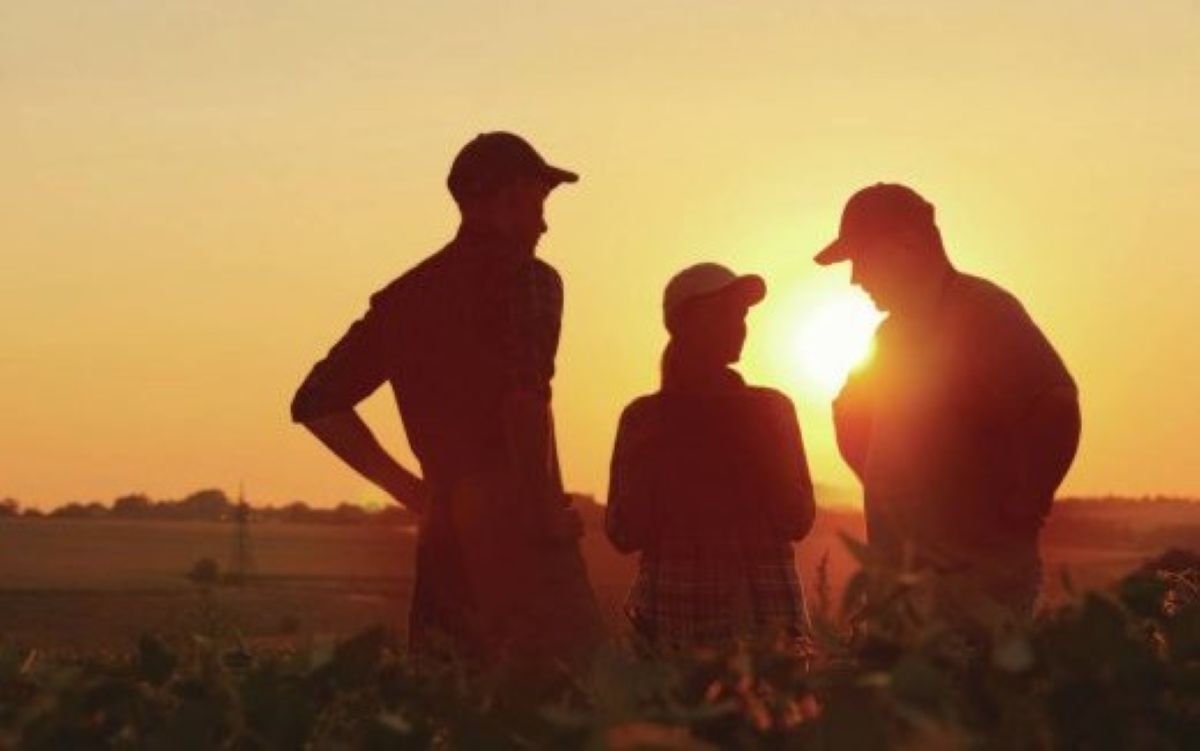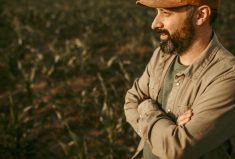The joke used to be that if you want to hold a meeting on the farm, all you really need is a mirror. But you don’t hear that joke so often anymore. And even when you did hear it, it was never as true as the joke tried to make it seem. Farmers may not always have had meetings, but they’ve always interacted, even if there wasn’t always a whole lot that was verbal about how they did it.
Geoff Hewson’s experience is a good example. The family’s 8,000-acre grain and oilseed farm at Langbank, a couple hours east of Regina didn’t always need meetings. “Before our generation began taking a more active role on the farm, my father and uncle Robin and Thomas were running it,” says Geoff, who is also vice-president of the Western Canadian Wheat Growers. “They didn’t see a big need for a formalized meeting structure. They were in contact with each other all the time, and always had an unspoken connection, not feeling the need to talk a whole lot.”
Read Also

The Secret Sauce of Sibling Run Farms
Working with family can be difficult, but successful sibling agricultural operations seem to leverage the unique advantages of their relationships to create growth for their farms.
Growing up on the farm, Geoff felt the whole family was included, noting, “We certainly weren’t kept in the dark. We didn’t make the decisions, but they weren’t kept from us either.”
As other family members got more involved (now the farm includes Geoff and his wife Amy, his sister Margaret, and his cousin Mark and his wife Amber), the farm outgrew that kind of “it-will-happen-on-its-own” approach.
Geoff says the family began having regular meetings when his sister returned to the farm full time, noting, “It just developed from there. There wasn’t particular tension or issues before, but looking back, I think it was a smart move — done proactively, not reactively.”
Starting in the winter of 2002, the family began meeting every Monday, typically for a one- to two-hour meeting, and they’ve continued building on and refining that strategy ever since.
Meanwhile, a half-day’s drive west of the Hewsons at Innisfail, Alta., the Edgar family also had an approach to farm meetings that many families will recognize.
Elna Edgar has been married now for 37 years, and recalls having sat down to her first family meeting the day after she married her brother’s best friend (whom she had known since the age of five).
“My mother- and father-in-law lived on the same farm in the same yard with us for the first 10 years of our marriage — and not a bad word was ever spoken between us,” says Elna.
Elna’s in-laws later moved to town, while she and her family moved into their farmhouse. Her father-in-law decided to return to work at the farm for quite a while after. “He always felt welcome to come back and work if he wanted to,” says Elna. “And if he wanted to stay in town for the day, that was fine too.”
“He and my mother-in-law were fantastic to work with. Everything was out in the open. We’d come over every morning — a ritual — have coffee and plan out the day. There’s always been that open line of communication.
“Farming is my passion,” says Elna. “There’s nothing else I’d rather be doing. I’ve never been a housewife. I’ve always been a farmer.”
The Edgars settled in the area in 1907. Today, Elna and her husband Doug are the fourth generation of Edgars working this land. A fifth generation is starting up too, with the Edgars’ daughter, Keri, and son-in-law Randy having built a house on the quarter south of them.
“Together, we continue having daily meetings with a lot of things being hashed out as we go,” says Elna. “Everyone knows what everyone else is planning for the day, and what everyone else is thinking.”
Same kinds of evolution
Even though the Edgars had this tradition of daily meetings, it wasn’t enough on its own. Today, in addition to the daily meetings, the family holds an annual meeting every year as well.
The point, says Elna, is to determine where the family sees itself going. “At these meetings, everyone has their own viewpoint,” says Elna. “We discuss them and make a decision from there, with everyone’s vote carrying the same weight.
“It’s critical to both talk and to listen, otherwise it’s just not going to work,” says Elna, who adds that accurate minutes are also kept, so the family has a record of what was decided and why.
Through this transition, the Edgars have also come to terms with what it takes to make such meetings work. “Everyone needs to be aware that it’s not about what’s best for me, but what’s best for the farm,” Elna says.
“What’s best for the farm is best for me in the long run.”
The Hewsons also settled on a formula that mixes formality and informality. At 29, Geoff is technically president of the family corporation, with his cousin, sister, dad, and uncle all sharing in the farm’s management and ownership. The meetings, however, aren’t structured to care about titles.
“No one really has a formal role of chair of the meeting,” says Geoff. “There’s usually enough stuff going on that if one member feels too much time is being spent on one subject, someone will say we need to talk about it more next week and meanwhile move on to the next matter.”
Like the Edgars, the Hewsons have also found their comfort level with paperwork. “We don’t have written agendas for our weekly meetings,” Geoff says. “We do keep a binder of written notes from the meetings, but we don’t do agendas.”
While there isn’t an agenda, the weekly meetings are structured with what the Hewsons look at as a standard operating procedure. Each meeting starts by reading over the notes from our previous meeting and addressing “action items.” Step two involves a review of markets, and updates and discussion on sales and positions taken. Then the meetings move on to new business.
“With disagreements, if a majority consensus is reached, whoever might have had the dissenting opinion will go along with the majority decision,” Geoff adds. “Our group is really good. Nobody gets too upset or bent out of shape about things. When there’s a disagreement, we can usually find an amicable way to deal with it.
“We do have the rare times when that doesn’t happen,” Geoff says. “We just move on.”
In part, that works because of the mentoring role of the older generation. “We do have Robin and Thomas (Geoff’s father and uncle) at the meetings, and theirs are very valued opinions,” Geoff says. “If they thought we were doing something that isn’t in the best interest of the farm, they would say so. But they don’t lord it over people that they might be the ones with the most experience or knowledge on the board. They never try to pull rank.”
“The first generation is very good about not dictating to the next generation,” Geoff adds. “It’s more that they coach us.”
As with the Edgars, however, attitude also has a lot to do with the success of the family’s reliance of meetings. In this case, it’s a shared attitude toward business. “The older generation has always been of the mindset that there is a need to spend money to make money — and not to spend it frivolously,” Geoff says. “If there’s a business case (that will enhance the farm’s profitability) to be made for a new purchase, then no one would stand in the way.”
Also like the Edgars, the Hewsons have an annual meeting. In their case, in fact, it’s a fairly formalized process, involving not only shareholders but stakeholders as well, says Geoff. “Outside advisory services have been used to help with more complex business decisions, such as succession.”
Now, the family is looking at the possibility of developing these into a semi-annual format.
Different kinds of farms
The Edgars’ farm, just off Hwy. 2 between Edmonton and Calgary, is very diversified, with not only the largest asparagus field in Alberta and 15 acres of hand-picked, market garden peas, but also beans, rhubarb, 1,200 acres of grainland, and cattle producing hormone- and antibiotic-free Angus beef.
Elna looks after a 42-acre market garden. In the spring and summer, 12 to 15 employees help out. Elna manages the quality of the picked produce, and plants peas and beans every week.
“My husband does the grain, and is the chief guy who fixes things when anything breaks down,” said Elna.
The Edgars are also heavily involved with Innisfail Growers, a five-family marketing co-operative that started up in 1993. Through the co-op, they participate in about 20 weekly, summer farmers’ markets, and a couple year-round markets. At the year-round markets, they do winter delivery to Red Deer and also have a permanent booth, opened four days a week, in Calgary with regular hired staff and an Edgar family member there to manage it fairly regularly.
At the year-round markets, the Edgars sell their Angus beef, as well as a lot of preserves — from beet pickles to asparagus pickles, asparagus relish, asparagus soup, pickled beans, mustard beans, apple chutney, apple sauce, apple butter, and fruit leather — adding value to their produce.
Part of the function of the meetings is to ensure everyone is up to speed on how the farm is growing and evolving, and to give them a voice in decisions. For instance, their daughter Keri and her husband now live at the farm. Keri is a stay-at-home mom and is heavily involved doing the books on the farm, while her husband Randy is involved with the cattle side of the business.
As farms go, the Hewson farm couldn’t be much more different. It’s a dedicated grain and oilseed operation totally focused on their productivity and efficiency as producers and marketers of canola, winter wheat, fall rye, spring wheat, malt barley, and oats.
“Having family meetings has definitely helped us financially,” says Geoff. Critical to their success, he says, is up-to-date record-keeping, plus a safe environment where open communication is not only expected, it’s prized.
“It’s also important to prioritize operations based on the greatest return/value, netting the best possible long-term results for the farm,” Geoff says.
“I’d say any family farm business with more than two people involved in the operation and management would benefit from having meetings,” Geoff sums up. “It doesn’t need to be weekly. It can be monthly or whatever works.” CG














